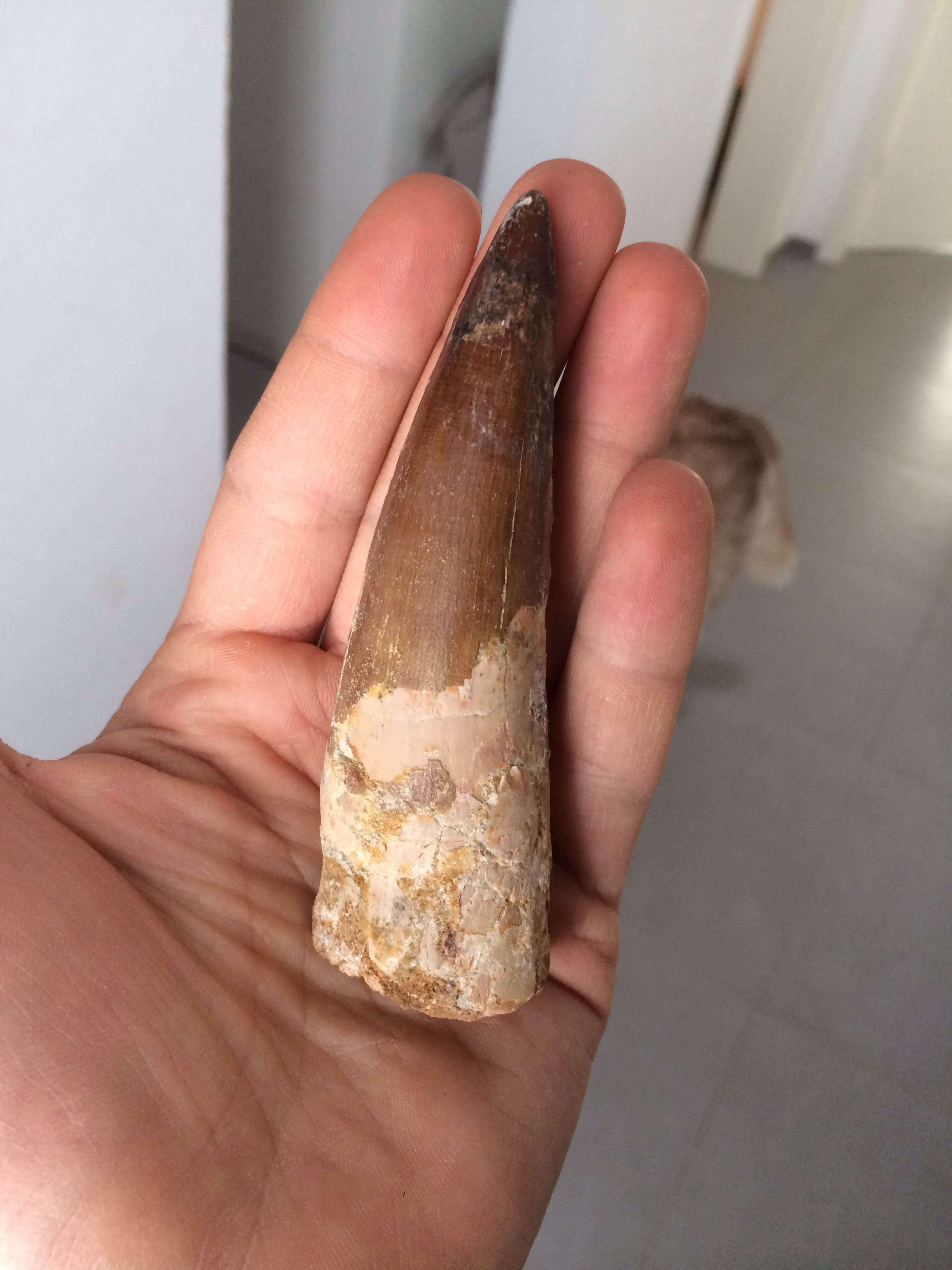- Joined
- Jun 22, 2003
- Messages
- 962
Oh man, this makes me homesick lol.Here is a theropod tooth I found (among others) at a special spot near Drumheller, Alberta. View attachment 137182
Okay, you aren't shoving that pic under my nose without explaining the purpose of those serrations.Nice find! Great serrations on the leading edge of that tooth, too! I'd love to find dinosaur fossils, but they're fairly scarce in SC, and most finds have been by accident.
pitbulllady

Oh my god! That is so awesome! I want one lolI haven't found this but purchased it a while ago:

Spinosaurus aegyptiacus tooth.
Think "STEAK KNIFE", Snark. Makes it easier to slice through flesh. Now imagine a mouthful of those babies. Based on the size of the tooth, which is actually rather small as carnivorous dino teeth go, and its flat lateral appearance as opposed to being more conical, as well as the abundance of mid-late Cretaceous fossils in Alberta, itOkay, you aren't shoving that pic under my nose without explaining the purpose of those serrations.
A beautiful example of divergent evolution. The shark produces more and more teeth which are disposable so to speak while these 'land sharks' evolved steak knives. Those serrations didn't just happen overnight so there was prey and circumstances that stayed much the same for an extended period of time that required the development of more efficient cutting ability. I'm guessing extreme competition for kills.Think "STEAK KNIFE", Snark. Makes it easier to slice through flesh. Now imagine a mouthful of those babies. Based on the size of the tooth, which is actually rather small as carnivorous dino teeth go, and its flat lateral appearance as opposed to being more conical, as well as the abundance of mid-late Cretaceous fossils in Alberta, it
probably is a Dromeaosaurid tooth. Dromeaosaurs were the group of small(relatively speaking) carnivores that are now generally referred to as "raptors".
pitbulllady
Considering how distantly related sharks and theropods are, it's more convergent than divergentA beautiful example of divergent evolution. The shark produces more and more teeth which are disposable so to speak while these 'land sharks' evolved steak knives. Those serrations didn't just happen overnight so there was prey and circumstances that stayed much the same for an extended period of time that required the development of more efficient cutting ability. I'm guessing extreme competition for kills.
I wonder why the sharks opted for the multiple rows of 'scalpels' over the serrated knives commonly found in other species today.
Well, - I think- I can help explain. Modern predators that have conical teeth are either possessing canines as their only conical teeth or are mainly piscivores. For some reason xiphodont teeth aren't very common anymore, probably because a mammalian tooth set is more effective at food processing and digestion and also because most animals with xiphodont teeth became extinct in the K/T extinction. However, there is a family of macropredators animals today that possess xiphodont teeth; VaranusMy example of the shark was a bad idea. Just introduced confusion.
I'm still not understanding the purpose of serration in that tooth. The predators, carnivorous hunters, all had round, conical teeth as the crocs of today.
All Crocodylinae have all round teeth. So when you refer to modern predators you are referring to what?? Or am I touching on the fact behind the term crocs are living fossils and that doesn't apply to present evolution esp. mammals?Well, - I think- I can help explain. Modern predators that have conical teeth are either possessing canines as their only conical teeth or are mainly piscivores. For some reason xiphodont teeth aren't very common anymore, probably because a mammalian tooth set is more effective at food processing and digestion and also because most animals with xiphodont teeth became extinct in the K/T extinction. However, there is a family of macropredators animals today that possess xiphodont teeth; Varanus